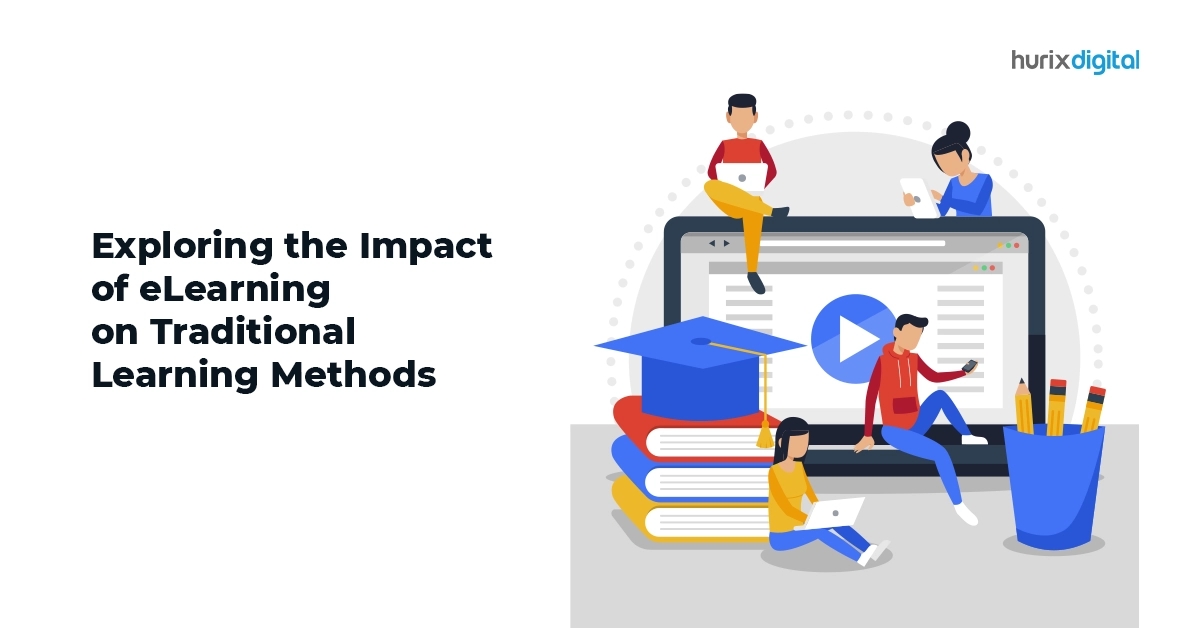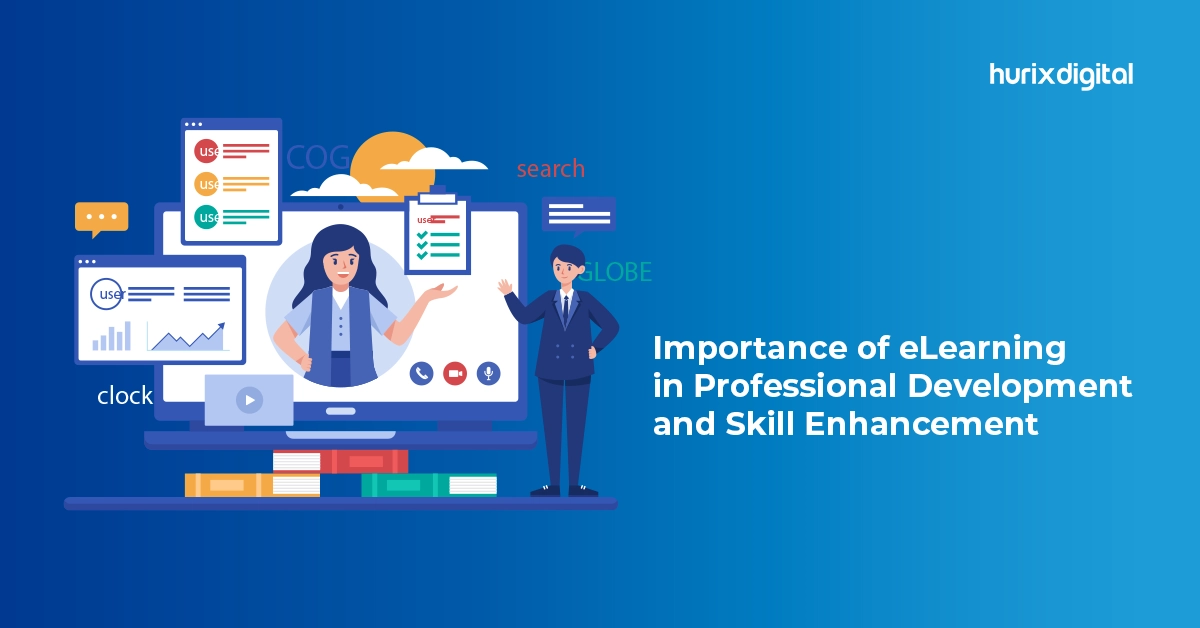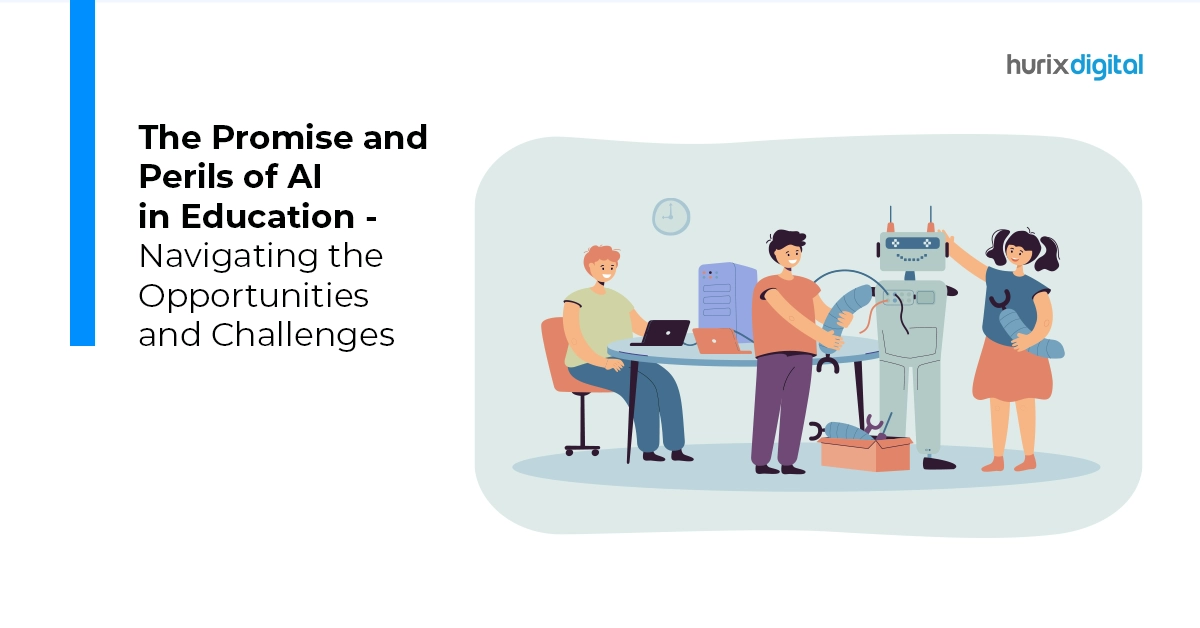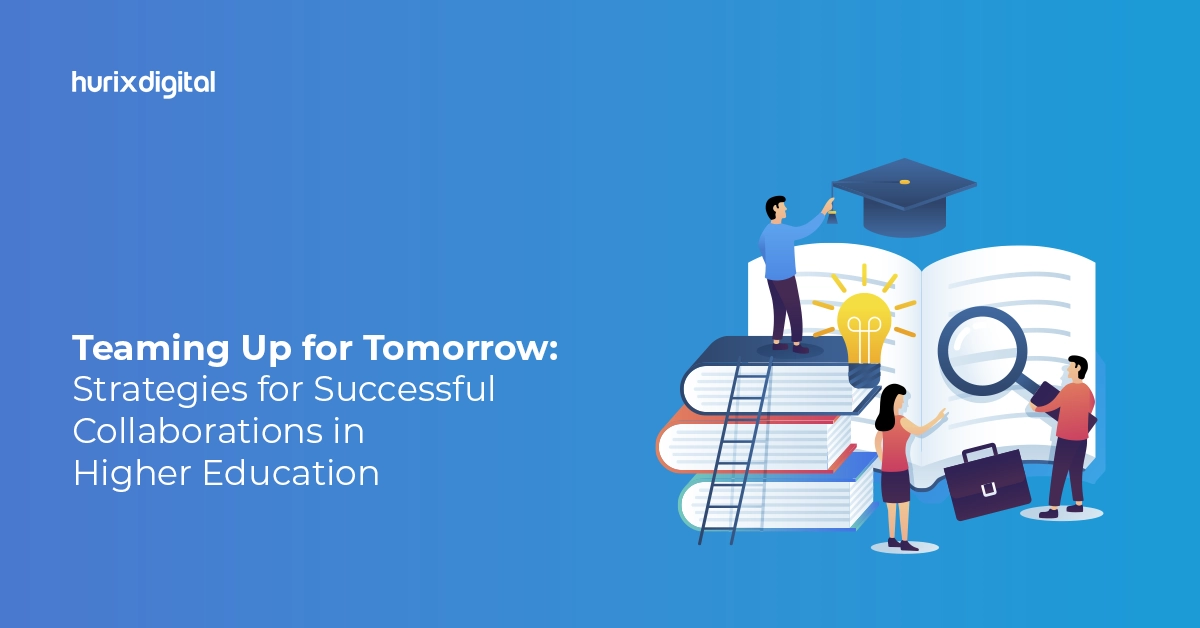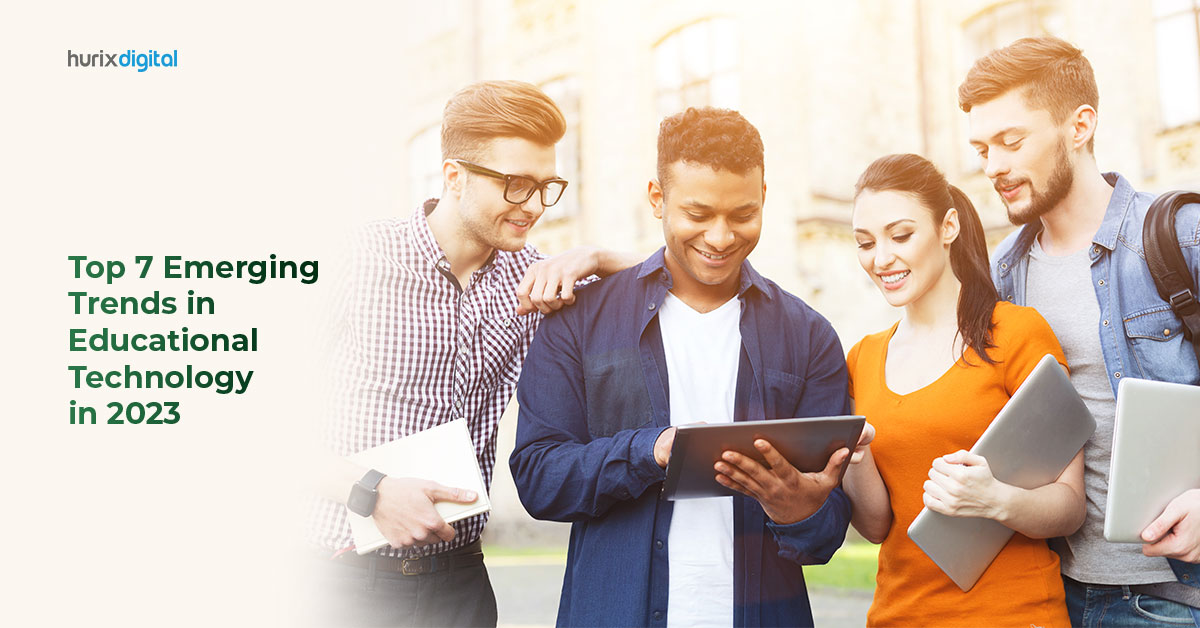
Top 7 Emerging Trends in Educational Technology In 2024
Summarize with:
Educational technology is a rapidly evolving field, with newer technological modules and resources being introduced at an alarming speed. The entire educational landscape has undergone a sea change in the aftermath of the Covid-19 pandemic and continues to develop with advancements in educational technology.
According to a projection by online marketing and consumer data platform Statista, the worldwide e-learning market is predicted to reach almost 400 billion U.S. dollars by 2026.
Emerging trends in educational technology are set to revolutionize the field of education in 2024 and the years to come. Educational technology makes learning accessible to a larger section of society and makes education more engaging for students.
Institutions can also use EdTech to create customized learning programs for different categories of students, including those with learning difficulties. If you want to remain relevant in the coming years, there is no way you can afford to miss these top emerging trends in educational technology.
Also Read: The Scope of Higher Education with e-Learning in the Digital Era
Table of Contents:
- Top 7 Emerging Trends in Educational Technology
Artificial Intelligence (AI) Powered Tutoring Systems
Microlearning
Augmented and Virtual Reality (AR/VR)
Gamification
Personalized Learning Processes
Blockchain Technology in Education
Automated Assessment - Conclusion
Top 7 Emerging Trends in Educational Technology
1. Artificial Intelligence (AI) Powered Tutoring Systems
One of the most important emerging trends in educational technology, AI-powered tutoring systems, has been around for a while now. However, the scale of their usage is expected to increase manifold soon.
AI-powered systems are computer-based learning systems that employ AI to simulate human educators and can provide effective lessons without a human teacher. AI-powered systems can create personalized learning experiences for students, complete with on-demand instruction and feedback to learners.
Why Are AI-Powered Tutoring Systems Here To Stay?
- Human-Like Learning Experience
AI-powered tutoring systems can provide interactive learning and collaborate with learners just the way human teachers can. They can be engaging and are different from basic menu-based AI bots.
In a randomized clinical trial involving medical students, AI-powered instructional systems demonstrated superior performance outcomes and skill transfer.
- Personalized Feedback
AI tutors can give relevant feedback to students, similar to the way human teachers do. Such personalized feedback helps motivate learners and encourages them when needed.
- Multimedia Learning
AI-powered tutoring systems offer a variety of learning mediums and can host multimedia learning through text, video, audio, simulations, and games.
- Encourage Self-Paced Learning
AI-powered tutoring systems are great for educational modules aimed at promoting self-paced learning. AI tutors can constantly monitor and track learners’ progress and give them feedback accordingly.
- Constantly Evolving
AI-powered tutoring systems are constantly evolving with advancements in edtech. Newer methods and techniques can be added to the learning modules every year.
Also Read: AI-Powered Education: Revolutionizing K-12 Learning through Robotics and AI
2. Microlearning
Microlearning is an approach to digital education in which information is broken down into smaller, easily digestible chunks and delivered in under ten minutes per session.
Microlearning is already happening through YouTube shorts, Instagram reels, and TikTok. This trend is among the significant emerging trends in educational technology that will grow in 2024 and beyond.
Benefits of Microlearning
- Less time to deliver and consume the content
- Better information retention
- Increases learners’ engagement
- Encourages learning on the go through mobile learnings
- Enables personalized learning
- Supports self-paced learning
3. Augmented and Virtual Reality (AR/VR)
Augmented and Virtual Reality (AR/VR) are emerging trends in educational technology that have grown multifold in usage over the past decade. AR provides an interactive experience to the viewer wherein a computer-generated image is superimposed on the viewer’s image of the real world.
Technology makes learning more fun and engaging and helps the learner easily acquire, process, and retain information. VR provides a simulated experience to the user utilizing a 3D image or environment that they can interact with in a seemingly “real” way by using special electronic equipment.
VR allows learners to learn through experience, making education more engaging.
4. Gamification
Gamification in education is a strategy that incorporates elements of games like scorecards, leaderboards, and trophies into educational modules and learning environments.
Gamification can make education a more interactive experience for learners by adding elements of fun, engagement, and healthy competition. It helps improve intrinsic motivation in the learners and encourages them to learn enjoyably.
Benefits of Gamification in Education
- Higher levels of engagement
- Makes learning fun and interactive
- Improved knowledge retention
- Instant feedback and reinforcement
- Connects education with real-world applications
- Encourages healthy competition among peers
- Enhances the overall learning experience for different categories of students
- Motivates learners to learn from their mistakes
5. Personalized Learning Processes
One of the major emerging trends in educational technology in the current era is personalized learning experiences. Data analytics and machine learning technology can gather relevant information about learners’ abilities, interests, preferred learning styles, etc., to create customized learning programs with a student-centric approach.
This trend is expected to become widespread in 2024. Advancement in EdTech has made it possible to design targeted lesson plans and assignments that are tailored to each student’s needs. This technology allows students to learn at their own pace, leading to increased engagement.
Also Read: Creating Personalized Learning Experiences with K-12 Content Solutions
6. Blockchain Technology in Education
Blockchain is a decentralized, digital ledger of transactions that enables the secure sharing of information. In other words, it is a digital database that can be shared across a private or public network.
Global spending on blockchain solutions is predicted to reach almost $19 billion by 2024. Given its rising popularity, Blockchain technology can potentially change how academic data is stored and how instructors and students interact with each other soon.
This EdTech innovation can revolutionize the way education is imparted in numerous ways.
How Can Blockchain Technology Impact the Education Sector?
- Aid educators in developing lessons and courses
- Digitize report cards and degrees
- Incentivize and tokenize education
- Streamline fees payment
- Improve accessibility of education to different sections of society
- Lower costs in the long-run
7. Automated Assessment
Automated assessment technology helps instructors and teachers automate the assessment of the learners’ tests, quizzes, or assignments. Software packages that can automate the entire assessment process are available for several technical courses.
Automated assessment is set to become more popular in 2024. This technology enables students to submit their assignments and papers securely, following which the software program will assess their performance against defined criteria.
Conclusion
The online educational section is undergoing revolutionary changes with advancements in blockchain technology, AR/VR technology, and AI-powered tutoring systems. To stay relevant in the current EdTech landscape, e-learning institutions must upgrade the way they impart education and provide an assessment to the students.
If you want to upgrade the EdTech in your educational institution and aspire to integrate modern educational methods and online interactive modules, then contact our experts at Hurix. Hurix Digital has been an industry leader in the field of educational technology for over two decades.
We will evaluate the educational requirements of your institution and design a customized online learning plan for you, taking into consideration the unique features of your institution, instructors, and learners.
Summarize with:

Senior Vice President
A Business Development professional with >20 years of experience with strong capability to sell new solutions and develop new markets from scratch. New Market Entry Specialist with experience working in the largest emerging markets. Exceptional experience in conceptualizing, ideating and selling new learning technologies like VR AR, etc. across multiple industry verticals.
 Upcoming Masterclass | Build an Army of Brand Evangelists using Training & Development | November 6th, 8am PT | 9PM IST |
Upcoming Masterclass | Build an Army of Brand Evangelists using Training & Development | November 6th, 8am PT | 9PM IST |

